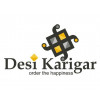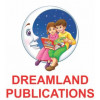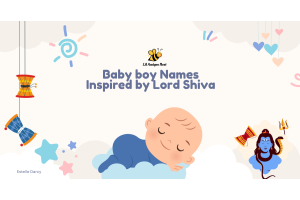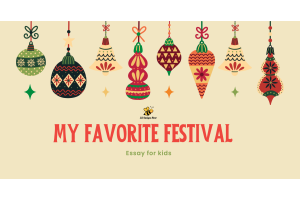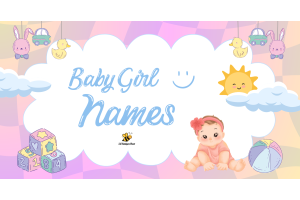Essay on Navratri
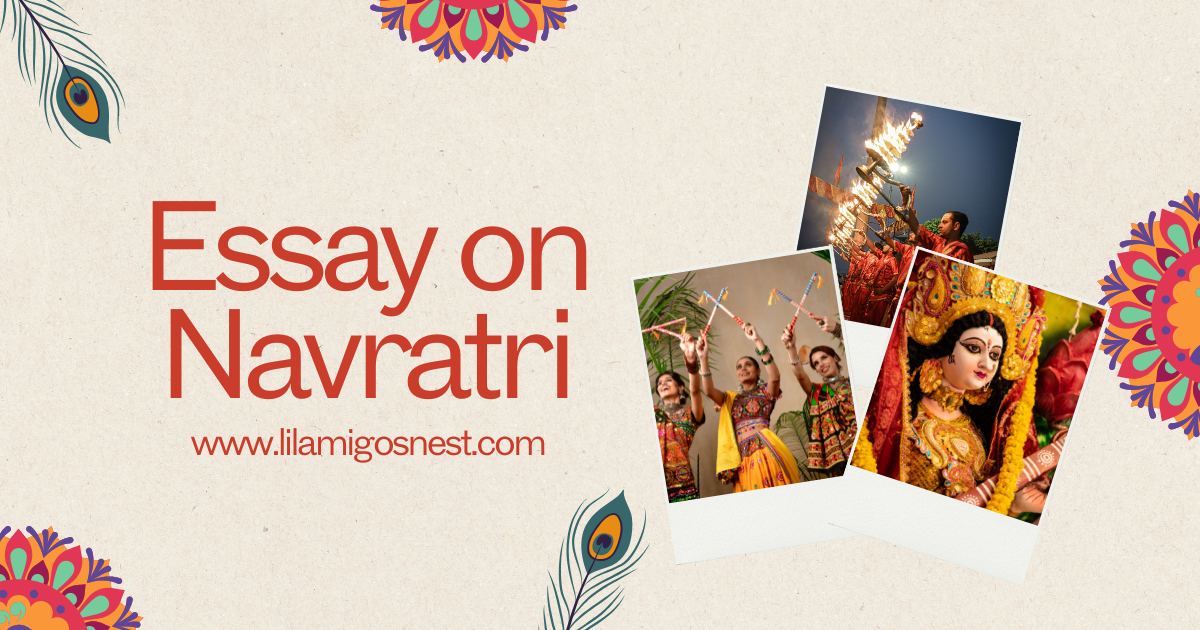
Navratri means "nine nights" and honors the goddess Durga in her many forms. Many families look forward to these days with excitement. For children, Navratri offers stories, music, dance, fasting, and colorful clothes that make it easy to describe why Navratri is my favorite festival essay topic. Durga Puja, which overlaps in spirit with many communities, is another major way people celebrate the goddess and her victory of good over evil.
What Navratri celebrates
At its heart, Navratri is about the victory of good over evil. The festival celebrates the power of the goddess Durga and her nine different forms, sometimes called the Navadurga. Each day honors a particular form and a particular quality, such as courage, wisdom, or compassion. In many regions, Navratri also marks the triumph of Lord Rama over Ravana, which is remembered with plays and Ram Lila performances. For families, it is a time to reflect on moral values and spend time together.
Navratri is both spiritual and social. Homes and temples become welcoming spaces where people come together to sing, dance, and pray. For children, the stories of Durga and other deities are easy to understand and full of lessons. For adults, the festival provides a chance to practice discipline through fasting or to renew community ties by joining public gatherings and cultural events.
A short history and origin
The story of Navratri is rooted in many ancient texts and local traditions. The most common theme is that the goddess Durga was created to fight a powerful demon who could not be defeated by the gods alone. Durga, with her many weapons and the help of divine beings, restored balance to the world. Many versions of this story exist across different regions, and over time, people added local customs and music.
Durga Puja became especially prominent in eastern India, where large, artistic idols of the goddess are made for public worship. These public festivals grew into major cultural events with music, art, and social gatherings. In western India, Navratri is known for energetic Garba and Dandiya dances. Both kinds of celebration show how diverse the festival is and how communities have shaped it over centuries.
The nine days and nine forms of the goddess
Navratri lasts nine nights and days. Each day is linked to a specific form of the goddess Durga. While names and details can vary by region, the general sequence of the Navadurga is familiar to many:
- Day 1: Shailaputri, symbolizing nature and strength.
- Day 2: Brahmacharini, representing devotion and penance.
- Day 3: Chandraghanta, symbolizing bravery and protection.
- Day 4: Kushmanda, who brings light and energy.
- Day 5: Skandamata, the mother of Skanda, representing maternal love.
- Day 6: Katyayani, the warrior goddess who destroys evil.
- Day 7: Kalaratri, fierce but protective, removing fear.
- Day 8: Mahagauri, symbolizing purity and calm.
- Day 9: Siddhidatri, who grants spiritual power and accomplishments.
These forms give Navratri a clear structure and make it easy for children to learn one goddess per day. The variations in names and attributes show how rich and flexible Hindu traditions can be.
Common rituals and practices
Navratri rituals combine prayer, fasting, community gatherings, and cultural events. Typical practices include:
- Ghatasthapana or Kalash Sthapana, in which a pot or sacred symbol is established at the start of Navratri as a sign of the goddess’s presence.
- Daily prayers, aarti, and reading or listening to stories about the goddess.
- Fasting, which can vary from strict water-only fasts to lighter fasts that allow certain foods. People choose the method that fits their health and beliefs.
- Garba and Dandiya dances in many communities, which are both devotional and social.
- Decorating homes and pandals with flowers, lights, and rangoli designs.
- Offering special foods and sweets to the goddess and then sharing them with family and friends.
Rituals are meaningful because they offer a pattern for prayer and celebration. For children writing a school essay, describing these activities helps show how a family prepares and what they experience during Navratri.
Fasting, food, and health
Many people fast during Navratri. Fasting is a way to focus on discipline, gratitude, and spiritual goals. Common fasting foods include fruits, milk, yogurt, certain vegetables, and special flours like buckwheat or water chestnut flour. Traditional fasting dishes are often tasty and simple.
From a health point of view, fasting needs to be done sensibly. Children, older adults, and people with medical conditions should follow a gentler approach or avoid strict fasting. Navratri also brings many special festive foods for those who do not fast. Food is an important part of the celebration, and sharing meals strengthens bonds within families and communities.
Navratri 2025 and Durga Puja 2025
Navratri 2025 and Durga Puja 2025 will follow the yearly rhythm of rituals, arts, and community events that people know and love. Though dates and local schedules can vary by region and temple, the spirit remains the same. People will plan Garba nights, decorate pandals, and prepare for public gatherings. For visitors and those new to the festival, Navratri 2025 will offer many chances to see music, dance, and devotional art.
Because communities plan special cultural programs, many cities will host large Navratri events and Durga Puja shows. These celebrations often attract tourists and participants from different places. If writing an essay about Navratri 2025, focus on traditions, the nine-day structure, and the way the festival brings people together.
Regional differences: how Navratri is celebrated across India
One of the most beautiful aspects of Navratri is its regional diversity. Different parts of India emphasize different customs:
- Gujarat: Famous for Garba and Dandiya dances. People form circles and dance around a lamp or symbolic image of the goddess. Bright clothes and rhythmic music are central.
- West Bengal: Here, Durga Puja is a grand public festival with huge, artistic idols placed in pandals for worship. The last day, Vijayadashami, features processions and immersion of the idols.
- North India: Many celebrate Ram Lila and the victory of Lord Rama alongside worship of Durga. There are plays, recitations, and temple ceremonies.
- South India: Navratri often includes the display of dolls and deities on stepped platforms called Bommai Golu, along with music and dance performances.
- Maharashtra and other regions: Temple processions, fasting, and small community rituals are common.
These differences show how the same core ideas can take many forms. Describing regional variations makes any essay on Navratri richer and helps readers see why the festival is a national treasure.
Cultural events: dance, music, and art
Navratri inspires lots of cultural activity. Garba songs are written to encourage group dance, and folk musicians perform for months before the festival. In cities, community centers and cultural groups organize competitions, concerts, and workshops for children. Artists create elaborate pandals and idols, and many craft fairs sell traditional clothing and decorations.
This cultural energy benefits local economies and helps pass traditional arts to the next generation. For an essay for kids, mentioning music, costume, and colorful dance gives a clear image of the festival’s joy.
Navratri as a family event
For many families, Navratri is a time of togetherness. Grandparents pass on stories of Durga and local customs. Parents help children choose outfits and teach dances. Some families host small satsangs, or spiritual gatherings, that include storytelling and music. The shared activities create memories and teach values like respect, courage, and generosity.
Because Navratri mixes celebration with values, it is a natural topic for a school assignment titled My Favorite Festival Essay. Children can write about staying up late for a Garba night, preparing a special dish with a parent, or performing a small prayer at home.
Navratri and community bonding
Navratri brings people beyond the family circle. Neighbors invite one another to participate in dances and prayers. Volunteer groups set up food stalls, arrange cleanliness drives around pandals, and organize safety for crowds. Young volunteers often learn event planning skills and leadership by helping run community programs.
Public celebrations like Durga Puja also emphasize inclusion. People from different linguistic and religious backgrounds attend pandals and enjoy the cultural shows. This makes Navratri a festival of unity and shared culture as much as a religious observance.
Teaching children about Navratri
When introducing Navratri to children, keep the message simple: Navratri honors goodness and the strength to do the right thing. Use stories of the goddess’s bravery and kindness. Encourage participation through dance, art projects, and simple prayers. For homework or school essays, children can write about their favorite Navratri memory, explain one of the goddess forms, or describe a day of celebration.
Parents can make learning fun with crafts. Children can create small paper lamps, draw the goddess’s symbols, or learn a short Garba step. These activities help a child understand the festival in a hands-on way.
Myth and meaning: morals behind the stories
The myths of Navratri are less about supernatural power and more about moral lessons. The goddess’s battles represent the human struggle to overcome greed, hatred, and injustice. Each form of Durga gives a lesson—patience, courage, purity, or wisdom. These symbolic meanings make Navratri a time for self-reflection and improvement.
Schools often use festival stories to teach values. A clear essay on Navratri will show how the festival highlights respect for family elders, compassion for the weak, and personal discipline.
Safety, environment, and respectful celebration
In recent years, people have added modern concerns to festival planning. Safety measures, crowd management, and environment-friendly practices are becoming standard. Many pandals now avoid excessive plastic, choose biodegradable materials, and manage waste carefully. Immersion of idols is often carried out in controlled ways to protect water bodies.
Respectful celebration also means being mindful of others. Loud noise late at night can disturb neighbors or those who are unwell. Community organizers and families that plan with care keep the festival joyful for everyone.
Navratri in cities and small towns
In large cities, Navratri and Durga Puja can be huge public spectacles. Cities host large pandals, light shows, and cultural programs with thousands of visitors. In small towns, the celebrations are more personal but equally heartfelt. Close-knit communities often take pride in traditional songs and dances passed down through generations. Both settings offer a warm experience, but the scale and pace can differ.
For a school essay, comparing urban and rural celebrations gives depth and helps readers appreciate how culture adapts to context.
How to write an essay on Navratri for school
If a student is writing an essay for school, follow this simple plan:
-
Start with a short, clear introduction that names the festival and why it matters. Include that Navratri honors the goddess Durga and mention Durga Puja if relevant.
-
Give a paragraph about the history or myth behind Navratri in simple language.
-
Describe rituals and customs, with at least one sentence about fasting, decorations, or dance.
-
Add a paragraph about regional differences to show variety.
-
Share a personal or family memory if allowed, or write why the festival is important to the community. This is a good place for my favorite festival essay content.
-
End with a brief conclusion that summarizes the festival’s meaning and values.
This structure keeps the essay organized and makes it easy for teachers to follow.
Celebrating Navratri in a modern world
Modern life has changed how people celebrate. Social media spreads Garba playlists and event notices. Online tutorials teach dance steps, and communities arrange ticketed cultural nights. At the same time, modern families keep older customs alive through small household rituals. Technology and tradition mix in ways that help the festival grow and reach new people.
Many young people use the festival to reconnect with their cultural roots. Schools and colleges host competitions that combine traditional music or dance with modern staging and lighting. This is how Navratri stays relevant to younger generations.
Why Navratri is a festival of hope
Navratri celebrates courage, renewal, and the belief that good can win over bad. For families and communities, it is a regular reminder of human values and shared culture. It gives people a chance to pause, reflect, and celebrate new beginnings. Whether small or grand, Navratri is full of symbolic meaning and lively practices that renew social bonds. Navratri is a powerful and joyful Hindu festival. The nine nights bring prayer, music, dance, and family time. It teaches moral lessons through stories of the goddess Durga and her forms.

